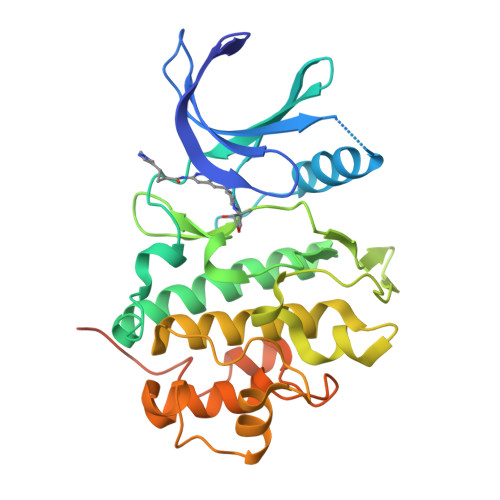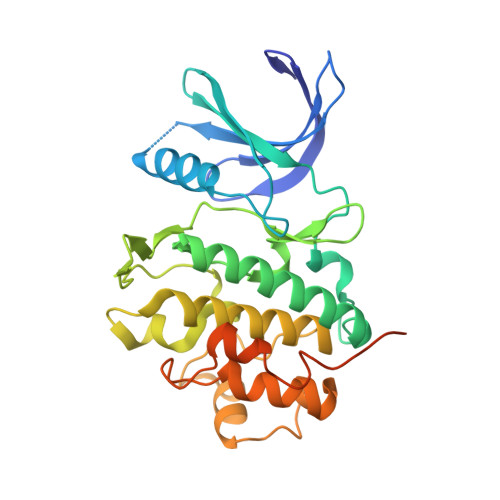Discovery of MK-1468: A Potent, Kinome-Selective, Brain-Penetrant Amidoisoquinoline LRRK2 Inhibitor for the Potential Treatment of Parkinson's Disease.
Kattar, S.D., Gulati, A., Margrey, K.A., Keylor, M.H., Ardolino, M., Yan, X., Johnson, R., Palte, R.L., McMinn, S.E., Nogle, L., Su, J., Xiao, D., Piesvaux, J., Lee, S., Hegde, L.G., Woodhouse, J.D., Faltus, R., Moy, L.Y., Xiong, T., Ciaccio, P.J., Pearson, K., Patel, M., Otte, K.M., Leyns, C.E.G., Kennedy, M.E., Bennett, D.J., DiMauro, E.F., Fell, M.J., Fuller, P.H.(2023) J Med Chem 66: 14912-14927
- PubMed: 37861679
- DOI: https://doi.org/10.1021/acs.jmedchem.3c01486
- Primary Citation of Related Structures:
8SIV, 8SIW, 8SIX - PubMed Abstract:
Genetic mutation of the leucine-rich repeat kinase 2 (LRRK2) protein has been associated with Parkinson's disease (PD), a disabling and progressive neurodegenerative disorder that is devoid of efficacious disease-modifying therapies. Herein, we describe the invention of an amidoisoquinoline (IQ)-derived LRRK2 inhibitor lead chemical series. Knowledge-, structure-, and property-based drug design in concert with rigorous application of in silico calculations and presynthesis predictions enabled the prioritization of molecules with favorable CNS "drug-like" physicochemical properties. This resulted in the discovery of compound 8 , which was profiled extensively before human ether-a-go-go (hERG) ion channel inhibition halted its progression. Strategic reduction of lipophilicity and basicity resulted in attenuation of hERG ion channel inhibition while maintaining a favorable CNS efflux transporter profile. Further structure- and property-based optimizations resulted in the discovery of preclinical candidate MK-1468 . This exquisitely selective LRRK2 inhibitor has a projected human dose of 48 mg BID and a preclinical safety profile that supported advancement toward GLP toxicology studies.
Organizational Affiliation:
Merck & Co., Inc., 33 Avenue Louis Pasteur, Boston, Massachusetts 02115, United States.


















